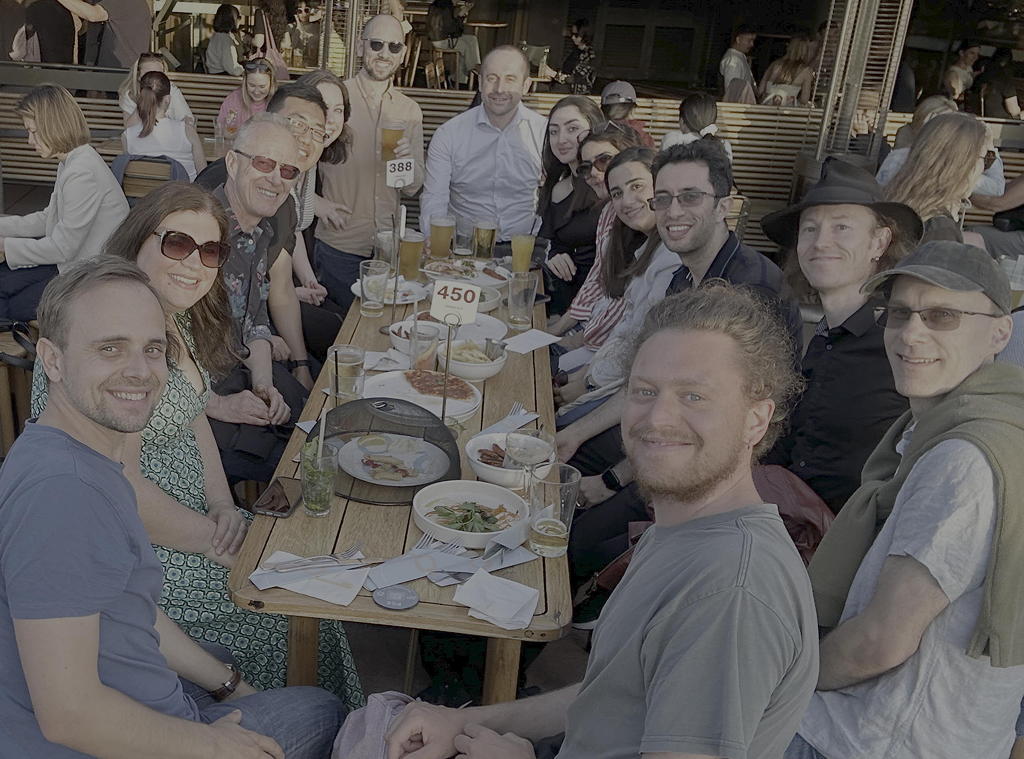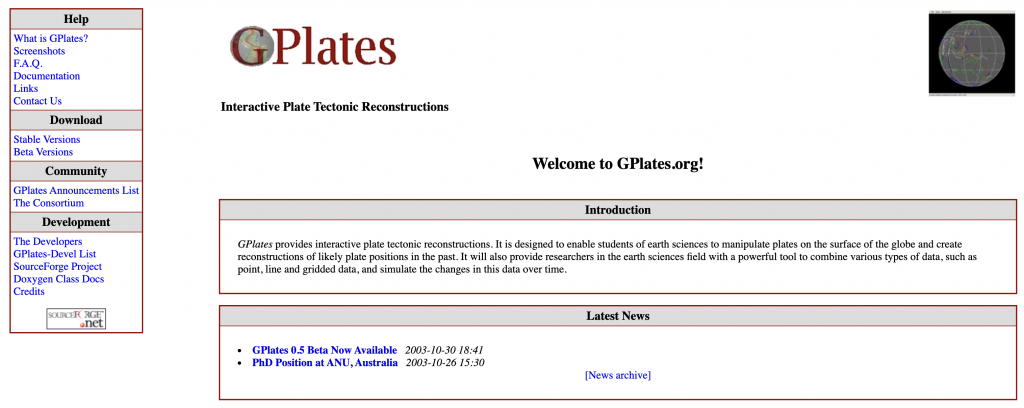
On the 30th of October 2024 GPlates Software Development had its 21st birthday. The first public version of GPlates was released exactly 21 years ago, with development led by the legendary James Boyden, who had teamed up with the no less legendary Hamish Ivey-Law who unfortunately could not join us at the Opera Bar for the birthday celebration. Hamish, we missed you, but we enjoyed the story recounted by James on your cunning and successful plan to both get hired as a team at the time! Enoch Lau also joined the early GPlates team and is credited with developing the initial GPlates python extension. Many years later AuScope support for GPlates started which allowed us to develop GPlates and its sister python libraries pyGPlates and GPlately into mature and stable software, led by John Cannon and Michael Chin, not to mention the GPlates Portal, GPlates web services and the GPlates App. Many others made contributions along the way, especially Mike Gurnis and Mark Turner at Caltech, Trond Torsvik, Robin Watson and Carmen Gaina at NGU and the Univ Oslo, Ben Mather who initiated the development of GPlately, Mike Tetley who took the lead in developing Plate Tectonic Tools (now part of GPlately) and Adam Kocsis who led the development of rgplates. In addition there are numerous contributors to GPlates plate model development. You’ll find the most popular plate models and their authors listed on the EarthByte plate model page. In addition, there are many more who have been involved in plate model development and their applications – the ~1900 publications where this work is documented are listed on the GPlates web page. In the meantime, the popular virtual globes and web services on the GPlates Portal have had more than 1.4 Mio visits. Looking forward to the next decade of development!

Discovering the true potential of the computer as a tool for geoscience.
A mini essay by James Boyden, 08/05/2006
Geoscientists continue to use computers like glorified pocket calculators, marvelling at the ability to perform the complicated arithmetic calculations associated with simulations, or rejoicing in the ability of the computer to handle highly repetitive tasks. Employing the tireless efficiency of the computer to perform repetitive and algorithmic tasks such as searching is the appropriate way forward, but these facilities remain under-utilised. The most advanced usage of computers remains the visualisation of data and results.
Simulation and visualisation are at the forefront of the powerful and productive uses of computers, yet the computer programs which perform these tasks continue to function in isolation, forcing the user to manage the input data and output results — as well as supplementary “data”, such as the observations of the scientist running the program, and any discussion of the results — by herself.
The most valuable asset a scientist has, are those moments of inspiration or flashes of insight which lead to break-throughs; the second most valuable asset is time. A system should not waste the user’s time, and even more importantly, it should never risk the results of those moments or inspiration or those flashes of insight by failing to save them or by allowing them to be accidentally overwritten or lost.
On the other hand, a system should not repress the freedom of thought which is a prerequisite to such moments of inspiration, by forcing the user to focus on the mundane (such as manually backing-up results, or digging through their on-disk or off-disk storage for information).
What is necessary is a system which fits into the user’s workflow, and augments and complements the creative mental facilities of the user by managing all the necessary trivialities such as back-up, indexing and other forms of data management by itself.
What is necessary is a system which consists of a data repository which conforms to the Five Principles of a Scientific Data Repository, along with an intermediate layer of searching functionality which is geospatially and geotemporally aware, and a powerful yet intuitive means of interacting with, and more importantly effectively utilising, both the data repository and the intermediate searching layer.
The fundamental concepts of the data repository exist, and the functionality which would be useful in an intermediate searching layer is already well known; what is needed is to flesh out the details of the data repository, and to research and develop the user-interface to the system. This user-interface will need to effectively and intuitively handle the explosion of information available to the user (and to prevent the user from being overwhelmed by this explosion of information) as a result of the revisioning and collaborative features outlined in Five Principles of a Scientific Data Repository. Among the necessary functionality will include:
- visualisation of, and traversal of, the tree-like revision histories of data;
- management of the visibility of data to others, and tracking of visibility and ownership of data;
- interaction with the decisions and revisions of other scientists in the collaborative environment;
possible enhancements like “weightings” given to revisions of data, to enable faster choice of appropriateness of revisions;- the ability to quickly and effectively manage large numbers of data, so that the user is able to proceed with her work without losing large amounts of time to data-management;
![]()
